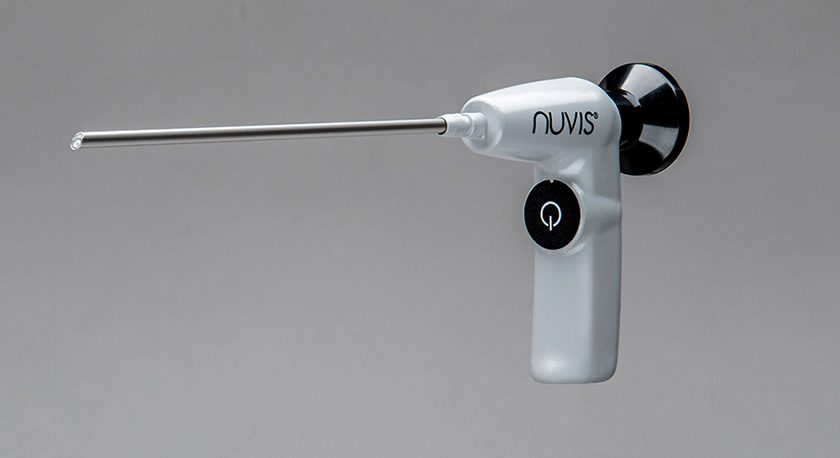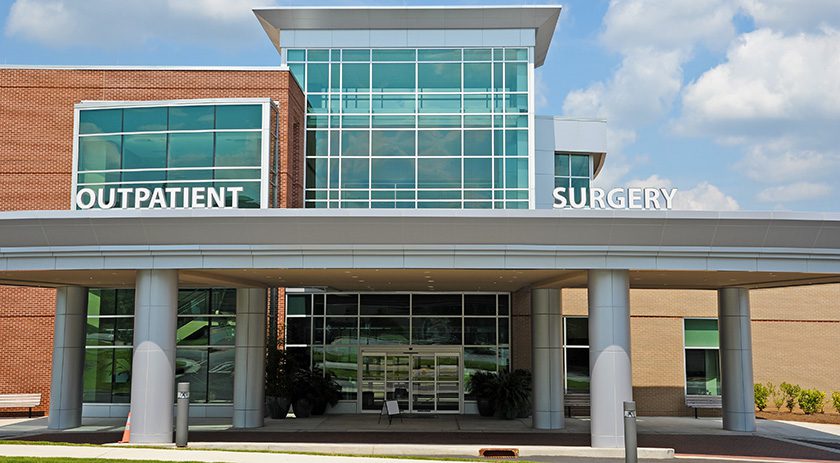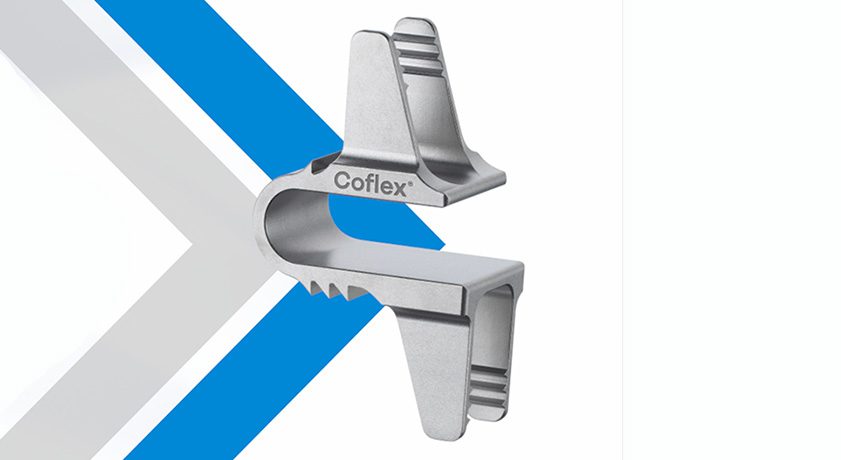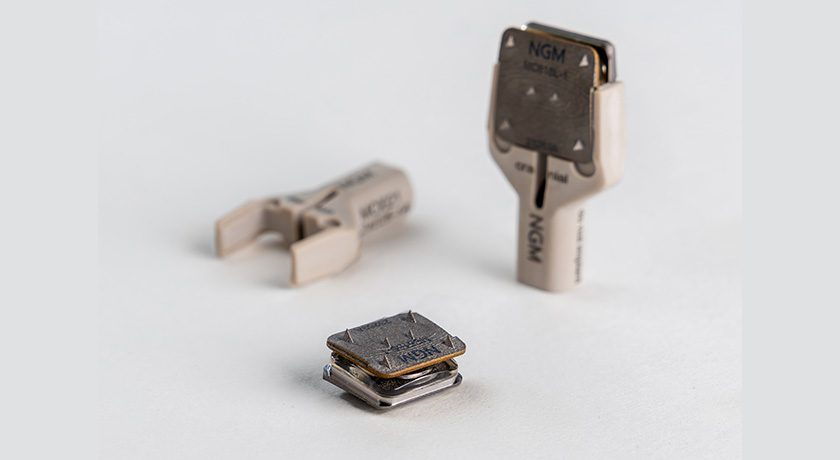

 Copy to clipboard
Copy to clipboard 
Spine is a crowded space, with hundreds of companies vying for a bigger share of the $10 billion market. It’s clear that companies are building commercial strategies and product portfolios that respond to important market drivers, including consolidation, enabling and smart technologies, motion-preserving implants and personalized procedures.
We spoke to nearly a dozen company leaders while attending the North American Spine Society (NASS) Annual Meeting in Los Angeles and asked how they’re differentiating themselves in the market and what spine technologies and trends they’re closely watching in the coming years. We’ve selected highlights from a few of those conversations to share here.
Market Access Pressures
Smaller companies we spoke with noted barriers to market access. GPOs seek to reduce costs by minimizing the number of companies from which they purchase implants, and insurance companies are pushing back on authorizing surgeries. All companies must find ways to differentiate themselves in the space with innovative technologies that decrease costs and improve outcomes. Executives also noted that this trend will continue to drive consolidation in the market.
Sean Browne, Xtant Medical CEO
“The number of products that spine surgeons can choose to use is quite unique in healthcare. The more prominent healthcare trends of stabilization and standardization are starting to take hold in spine. We deal with managed care organizations with our Coflex product, and these organizations are becoming more important and more of a concern to spine companies. Coflex is still a very profitable procedure, but it might not be forever. I’m watching to see what happens on the managed care side.”
Patrick O’Donnell, NanoHive Medical CEO
“We’re seeing several insurance companies pinching, trying to reduce the number of spinal surgeries by making authorizations very difficult for surgeons and their patients. Combine that with the GPOs trying to reduce costs by minimizing the number of players in their institution. We’ve asked ourselves, how do we make sure that we’re out in front of these trends?”
Enabling and Smart Technology
Preoperative planning, navigation and robotics continue to spur growth for spine companies. These systems are a significant focus for large players. Medtronic’s only physical products at NASS were its enabling technologies. Stryker highlighted its Q Guidance System and noted that its Mako robotic spine application will be ready in 2024. Spine continues to see market entrance of numerous implant-agnostic robotic and navigation systems with smaller footprints and price points. Further, we heard multiple discussions about smart implants playing an important role in postoperative care in the future. The week before NASS, NanoHive Medical and DirectSync Surgical announced a partnership to develop smart implants.
Keith Evans, Stryker Vice President and General Manager of Enabling Technology
“As we start thinking about robotics or adding powered instrumentation with navigation and additional intelligence, we can show surgeons something they haven’t seen before. We believe that’s the next frontier. There are preoperative and postoperative technologies that wrap around these other systems, which will be a big deal. Our focus now and next year is on building out the full complement of technologies in the O.R. and then adding preoperative and postoperative capabilities.”
Patrick O’Donnell, NanoHive Medical CEO
“The idea of having a patient-powered, no-battery sensor that stimulates fusion using our proprietary lattice technology is a perfect fit from an innovation standpoint. It’s exciting that the technology could reduce or mitigate the biologics required. The postoperative applications are attractive to me, too. Patients might not need to return for multiple x-rays because surgeons will be able to remotely track the progress of their recoveries. That’s good for surgeons because they’ll be able to gather clinical data. Payors and GPOs are trying to reduce costs, seeking more robust data and rewarding innovation. Every stakeholder in the patient care chain could be positively impacted.”
Patient Care Considerations
Surgeons and company executives emphasized optimizing patient selection for specific procedures. These considerations will become easier as data is collected via technologies and registries. For now, companies are marketing their technologies around comprehensive care and targeted patient populations.
Josh Johnson, Stryker Vice President and General Manager of Core Spine
“Surgeons are taking a more holistic approach to their first intervention than they did a decade ago. They used to treat spine ailments at individual levels. We know that the first intervention in spine is typically not their last. Now, surgeons are taking a broader, longer-term thinking on that first intervention. How might they treat patients during the first procedure to prolong or, ideally, put off having to perform a second intervention? Time will tell, and data will prove whether that thinking improves patient care.”
Ron Lloyd, Spinal Elements CEO
“We looked at the optimal patient population and procedure for our Karma technology. We’ve landed on aging spine patients who are 60-65 years of age or older. Based on demographics, it’s the fastest growing patient population, which is expected to grow 30% in the next 10 years. These patients tend to suffer from stenosis and most have instability in the spine. Our Karma system hits the sweet spot between stability and invasiveness. It is applied through the strongest cortical parts of the spine. Most patients have osteoporosis, and this procedure puts the product through the strongest bone segments within the spine. We think it’s a unique way to provide additional stability without an invasive fusion approach.”
We also heard comments about targeting ambulatory surgical centers as procedures move out of the hospital setting, and the desire to advance implant designs to reduce the use of orthobiologics.
Hundreds of spine companies exhibited at NASS. We expect larger players to focus on developing enabling technology, while smaller companies will concentrate on enhancing implant systems. Companies of all sizes are likely to be acquisition candidates.
Spine is a crowded space, with hundreds of companies vying for a bigger share of the $10 billion market. It’s clear that companies are building commercial strategies and product portfolios that respond to important market drivers, including consolidation, enabling and smart technologies, motion-preserving implants and personalized...
Spine is a crowded space, with hundreds of companies vying for a bigger share of the $10 billion market. It’s clear that companies are building commercial strategies and product portfolios that respond to important market drivers, including consolidation, enabling and smart technologies, motion-preserving implants and personalized procedures.
We spoke to nearly a dozen company leaders while attending the North American Spine Society (NASS) Annual Meeting in Los Angeles and asked how they’re differentiating themselves in the market and what spine technologies and trends they’re closely watching in the coming years. We’ve selected highlights from a few of those conversations to share here.
Market Access Pressures
Smaller companies we spoke with noted barriers to market access. GPOs seek to reduce costs by minimizing the number of companies from which they purchase implants, and insurance companies are pushing back on authorizing surgeries. All companies must find ways to differentiate themselves in the space with innovative technologies that decrease costs and improve outcomes. Executives also noted that this trend will continue to drive consolidation in the market.
Sean Browne, Xtant Medical CEO
“The number of products that spine surgeons can choose to use is quite unique in healthcare. The more prominent healthcare trends of stabilization and standardization are starting to take hold in spine. We deal with managed care organizations with our Coflex product, and these organizations are becoming more important and more of a concern to spine companies. Coflex is still a very profitable procedure, but it might not be forever. I’m watching to see what happens on the managed care side.”
Patrick O’Donnell, NanoHive Medical CEO
“We’re seeing several insurance companies pinching, trying to reduce the number of spinal surgeries by making authorizations very difficult for surgeons and their patients. Combine that with the GPOs trying to reduce costs by minimizing the number of players in their institution. We’ve asked ourselves, how do we make sure that we’re out in front of these trends?”
Enabling and Smart Technology
Preoperative planning, navigation and robotics continue to spur growth for spine companies. These systems are a significant focus for large players. Medtronic’s only physical products at NASS were its enabling technologies. Stryker highlighted its Q Guidance System and noted that its Mako robotic spine application will be ready in 2024. Spine continues to see market entrance of numerous implant-agnostic robotic and navigation systems with smaller footprints and price points. Further, we heard multiple discussions about smart implants playing an important role in postoperative care in the future. The week before NASS, NanoHive Medical and DirectSync Surgical announced a partnership to develop smart implants.
Keith Evans, Stryker Vice President and General Manager of Enabling Technology
“As we start thinking about robotics or adding powered instrumentation with navigation and additional intelligence, we can show surgeons something they haven’t seen before. We believe that’s the next frontier. There are preoperative and postoperative technologies that wrap around these other systems, which will be a big deal. Our focus now and next year is on building out the full complement of technologies in the O.R. and then adding preoperative and postoperative capabilities.”
Patrick O’Donnell, NanoHive Medical CEO
“The idea of having a patient-powered, no-battery sensor that stimulates fusion using our proprietary lattice technology is a perfect fit from an innovation standpoint. It’s exciting that the technology could reduce or mitigate the biologics required. The postoperative applications are attractive to me, too. Patients might not need to return for multiple x-rays because surgeons will be able to remotely track the progress of their recoveries. That’s good for surgeons because they’ll be able to gather clinical data. Payors and GPOs are trying to reduce costs, seeking more robust data and rewarding innovation. Every stakeholder in the patient care chain could be positively impacted.”
Patient Care Considerations
Surgeons and company executives emphasized optimizing patient selection for specific procedures. These considerations will become easier as data is collected via technologies and registries. For now, companies are marketing their technologies around comprehensive care and targeted patient populations.
Josh Johnson, Stryker Vice President and General Manager of Core Spine
“Surgeons are taking a more holistic approach to their first intervention than they did a decade ago. They used to treat spine ailments at individual levels. We know that the first intervention in spine is typically not their last. Now, surgeons are taking a broader, longer-term thinking on that first intervention. How might they treat patients during the first procedure to prolong or, ideally, put off having to perform a second intervention? Time will tell, and data will prove whether that thinking improves patient care.”
Ron Lloyd, Spinal Elements CEO
“We looked at the optimal patient population and procedure for our Karma technology. We’ve landed on aging spine patients who are 60-65 years of age or older. Based on demographics, it’s the fastest growing patient population, which is expected to grow 30% in the next 10 years. These patients tend to suffer from stenosis and most have instability in the spine. Our Karma system hits the sweet spot between stability and invasiveness. It is applied through the strongest cortical parts of the spine. Most patients have osteoporosis, and this procedure puts the product through the strongest bone segments within the spine. We think it’s a unique way to provide additional stability without an invasive fusion approach.”
We also heard comments about targeting ambulatory surgical centers as procedures move out of the hospital setting, and the desire to advance implant designs to reduce the use of orthobiologics.
Hundreds of spine companies exhibited at NASS. We expect larger players to focus on developing enabling technology, while smaller companies will concentrate on enhancing implant systems. Companies of all sizes are likely to be acquisition candidates.

You are out of free articles for this month
Subscribe as a Guest for $0 and unlock a total of 5 articles per month.
You are out of five articles for this month
Subscribe as an Executive Member for access to unlimited articles, THE ORTHOPAEDIC INDUSTRY ANNUAL REPORT and more.
CL
Carolyn LaWell is ORTHOWORLD's Chief Content Officer. She joined ORTHOWORLD in 2012 to oversee its editorial and industry education. She previously served in editor roles at B2B magazines and newspapers.







